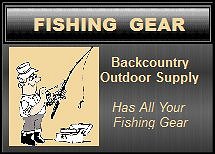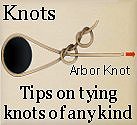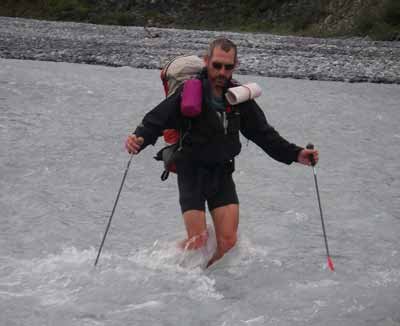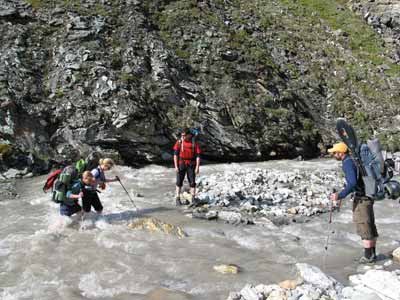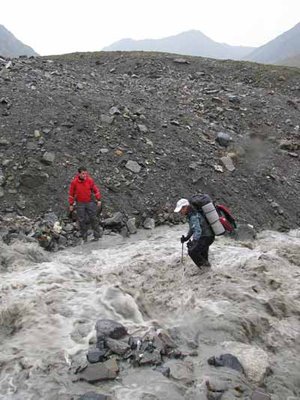The country's premier hunting and fishing daily news
The Backcountry Press
The Backcountry Outdoor News reports the latest hunting & fishing news along with fishing derbies & tournaments
from:
| ||||||
| ||||||
|
Hunter Safety
HOW TO CROSS A RIVER SAFELY
Submitted by: Backcountry Press Outdoor News
© 2010 Backcountry Press Outdoor News - All Rights Reserved
BACKCOUNTRY PRESS is the country's premier daily hunting, fishing & outdoor news in the USA, Canada and more. Read whats happening in your neck of the woods & beyond.
For those who provide updated information in the field of hunting & fishing, please don't hesitate to contact us to get
your articles added to our site.
Loading
There are two types of river crossings
“Type one is you’re going to walk across and type two is the kind you know you are going to be swimming across the river.“Type one can turn into type two real fast.” When that happens, you have to be prepared for it. One of the biggest dangers of hunting, fishing or traveling in Alaska or anywhere in North America — crossing cold, strong, glacial-fed or rain-swollen rivers.
People freeze. “They need footing every step so they’re out in the middle of the river not moving and they get swept off their feet. Then, they’re trying to get back on their feet, trying to stand up, and it never works.”
Once you are swept off your feet, there is only one thing to do, hammering as hard as you can for the other side.
Last year, a woman tied herself to a rope that other hikers had previously strung across the stream. There was too much slack in the rope and the current swept her and and another person off their feet, at which point they were submerged and held underwater by the current. One cut himself free and went back to try and save the woman but it was to late.
Crossing a river, a type two river in Alaska or anywhere in North America, is one of the most dangerous things anybody can do and requires the utmost respect and consideration before you do it. There’s nothing more dangerous out in the wild, particularly in Alaska, than fast, COLD moving water.
Water is a thousand times stronger than a grizzly. Water is not doing a bluff charge, it’s just going downstream. If you’re in the way, you’re going downstream, too.”
Crossing considerations
Several factors go into picking the right place to cross a stream or river, including water depth, strength of the current and runout.
* If you’ve got something with some strong current, you don’t want to get any deeper than your crotch.
* If you can hear rocks flowing downstream you don’t even mess with it, you’re in the wrong place.
* The best thing to do is find a spot where a river or stream braids into multiple channels, which are shallower and not as strong as a single channel. Avoid narrow, deep channels. Look for a place with good footing on both sides. It must be easy to get in and to get out.
* One of the most important considerations when crossing a stream or river is what the runout, or the area below the crossing, looks like. So if you do lose your footing, where are you going to go is a very important consideration.” You’ve got to have runout. If you get to the far shore and the bank is bad, you’re screwed.”
Things to look for include cut banks that are hard to climb up and strainers or sweepers, downed trees in the river that can trap you if you are swept off your feet and down the river. Never cross a stream or river just above a canyon or rapids where the current narrows and gets stronger.
Water levels in glacier streams fluctuate daily, depending on the weather, experts noted. They come late in the day as a result of ice melt during the day and they go down at night when it cools off. The best time to cross a glacier stream is usually early in the morning, before ice starts melting.
People cross a river and they think it’s going to be the same when they come back and suddenly the water is higher and it’s not the same river.
Crossing techniques
All the experts agreed on one thing: Using a rope to cross a river is not a good idea and securing yourself to a rope is a recipe for disaster, or death. If there was a rope all the way across the river and it was taut, I maybe would hold onto the rope, but never tie into it.
* Use walking sticks as the “tripod” technique to cross rivers and streams. Get a stick and put it upstream of you, while your facing straight into the current and side stepping and moving the stick as you go, leaning into it pretty stout.
* You don’t cross your legs. You keep a wide stance. You feel the bottom with your feet. Cross the river at a 45-degree angle into the current, facing upstream, and move your legs sideways. Your legs are what’s keeping you going. If you do anything to compromise the power of your legs, the current is going to blast you out of there.
* Linking arms with another person or persons to increase stability is another way to cross streams and rivers.
* When there are multiple people in a group, the pyramid technique, or “geese formation. You form a V facing into the current and move sideways across the river to break the current. If you do get swept off your feet, the best thing to do is swim for the opposite bank as hard as possible.
* Always wears shoes when crossing a river. When the gravel starts rolling underneath you and you get swept off your feet, you want to be going as fast as you can. “You want to be able to run or bounce off the bottom, anything you have to do to get to the other side.”
* Keep your pack light (35lbs or less). Strip down to a thin layer and put all your gear in a plastic bag that goes in your backpack. Tie the plastic bag shut, trying to preserve as much air as possible in the bag so it acts like a floatation device. Unclip the waist band on your backpack, so if you do go in you can shed the pack.
After getting out of the water, put on a dry layer of clothes to warm up and get moving as quick as possible.
Trekking poles to help this man cross a glacial stream near the Canning River in Alaska.
With arms linked and each using a trekking pole for balance, These two cross the upper Hulahula River in Alaska.
Using a pair of trekking poles for balance and facing the current, this man crosses a rain swollen creek that is part of the Sheenjek River in Alaska.







